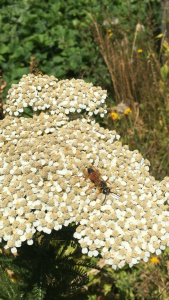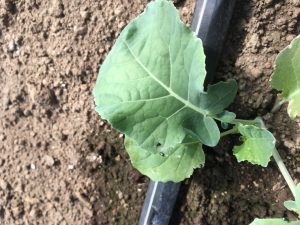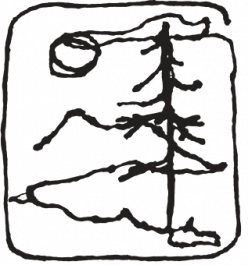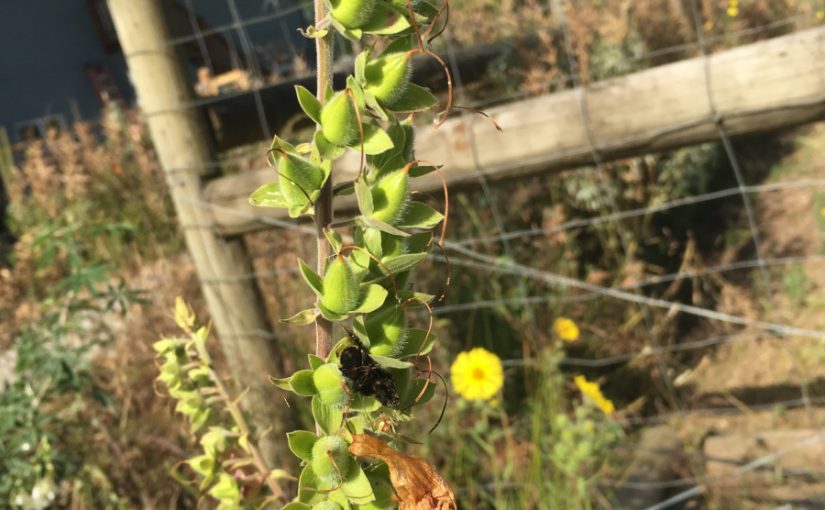This week, the usual weeding of plots and harvesting for the CSA occurred. Alongside the usual tasks, lots of discussion about insects on the farm occurred!
Tuesday
On Tuesday, TJ introduced me to a WSU researcher who keeps up two research plots of pollinator loving plants on the farm. Over the course of four years, he has been monitoring the pollinator strips as well as the diversity and populations of bees and other pollinators on TJ’s farm. He sets up traps throughout the fields and identifies species, tracking their progress and if new species have also come to the farm.
The pollination strips were planted with various pollinator attracting varieties, including hemizonia of the Asteraceae family, clarkia of the Onagraceae family, globe gilia of the Polemoniaceae family, and lupine of the Fabaceae family. Over the past four years, an interesting succession of plants have occurred. Predominantly what is left within the strips is the lupine, whereas in past years the lupine had been less of a player in the pollination strips. It appears that the lupine also greatly attracts aphids. The lupines were covered in them!

It is interesting to note that TJ has not had an aphid problem this year. I wonder if the lupines attract the aphids to the pollination strips, and they don’t venture into the fields in production. Attraction of parasitic wasps to the farm have also increased with the pollination strips, so that might also contribute to the decrease in aphids in the plots.

On Tuesday, we also planted cauliflower and used half a tablespoon of the nutrient mix. Other activities included harvesting raspberries (so many raspberries!) and weeding around the farm in preparation for the Tye Menser Meet and Greet on Thursday.
Wednesday
On Wednesday, preparation for the CSA’s started early. We washed lettuce, kale, and green onions (the first week green onions have been in the CSA box) as well as harvested large amounts of zucchini and raspberries. There are three raspberry plantings at TJ’s farm, including one planted in the early days of the Wendell Berry Community Garden. Likely these will be pulled out come fall as they are far less productive.

We then checked out the planting of collard greens from last week. Unfortunately, it appeared that flea beetles had truly went to town on the fresh plantings! The damage was enough to warrant intervention. Thankfully, we caught it early and applied neem oil to each of the plants. This seems to work the best for flea beetles TJ has found. Even at a low concentration, neem oil will successfully deter flea beetles.
No compost related activity this week as we were short on folks to help out with construction, so next week there will be more compost activity!

